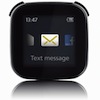Friday, September 10, 2010
Android and the "Two Enterprises"
Posted by Don Sorcinelli in "Android Articles, Resources & Developer" @ 06:00 AM
When it comes to any technology that can be used for work, the question of "enterprise-ready" comes to the surface sooner or later. With all of the advances in mobile phones in recent years, it often seems that this question is asked on a monthly basis. One of the more recent mobile platforms receiving enterprise scrutiny as been the Android operating system. Answering the question "is Android ready for the enterprise" may not be quite as simple as one might expect, however.
The Two Halves of The Enterprise Whole
When it comes to determining whether or not any technology is ready for the enterprise, there are two distinct audiences to consider. First, there is the user. From a user perspective, the view on "enterprise-ready" has always been "can this technology help me do what I need to do when I need to do it?" In this respect, modern smartphones almost always meet this challenge in one way or another. Accessing email, reviewing documents, performing research are among the many things an enterprise user can accomplish on a mobile phone. Of course, most enterprise workers also prefer to carry only one phone, so the phrase "all work and no play" often applies here, with users wanting to be able to manage and interact with their personal life on the device as well. It is often this latter aspect of mobile technology that comes into conflict with the second enterprise audience - the business itself and the organizations responsible for managing technology.
Enterprise IT organizations have increasingly become tasked with managing mobile phones in a fashion similar to other enterprise technologies. Of course, the emphasis for these organizations goes beyond the enterprise user requirement of getting things done; there are a number of business factors to also be considered. Questions like "can I keep track of this asset", "how safe is our corporate data" and "what can be done when something goes wrong" add to a list of requirements in determining enterprise readiness for any new technology. Some unique aspects of mobile phones make the answers to many of these questions often hard to answer.
When Business and Personal Become Blurred
For users, mobile phones are quite frankly the most "personal" of business technologies. While users are often comfortable with a work computer and a home computer, the thought of two phones is usually considered a nuisance at best, and simply not acceptable at worst. As a result, enterprise users prefer (and often demand) a single phone to do it all. For enterprise IT organizations, this concept often comes in direct opposition to the concept of distinct separation of information.
Mobile phones also bring with them challenges regarding the fundamental principles of ownership. While most corporate computing hardware is typically purchased, owned and controlled by the enterprise, the increasing trend with mobile phones is just the opposite; the user purchases and owns the phone and the plan, and is usually compensated by the company if the device is used in a business role. This "personally liable" strategy often has ramifications with regards to "who owns what" when it comes to data on a device.
What Can A Mobile Phone OS Vendor Do?
Mobile Phone OS vendors have learned that simply making the enterprise user happy is often not enough. Both RIM and Microsoft focused a great deal of energy over the years on creating an operating system that pleased enterprise IT organizations. The focus in these situations often focus on control and compliance. The ability to remotely monitor and configure a device to meet corporate standards, be it for security reasons or simple asset management, was made possible (in RIM's case, via Blackberry Enterprise Server and in Microsoft case by providing APIs for either Microsoft or third parties to provide solutions). Native applications for email and PIM functionality were also provided. While these features pleased enterprise IT, the lack of the "personal touch" in user-friendly and modern user interfaces and features often left the enterprise user less than satisfied. This changed with Apple and the iPhone.
The iPhone changed the face of the smartphone, moving the emphasis from features to user experiences. Early on, however, the iPhone provided little to enterprise IT organizations in the way of their needs. Early battles between enterprise users and IT organizations often resulted in an IT "win", especially within businesses under strict regulatory compliance (governmental or industry) and businesses where protection of intellectual property was paramount. Without the ability to monitor or control the iPhone and it's use, allowing the device to connect to even the most basic of resources (email) was often forbidden (I know of at least 2 extremely large companies that I consulted with during the early years with such bans, and second-hand stories of many more). Add to this the early "issues" with the iPhone OS for a period of time reporting to Exchange that it supported encryption when in fact it did not, there was plenty of supporting evidence for IT skepticism.
Apple has seen the need to become more "enterprise-friendly" over time, adding features to the platform (starting with the iPhone 3G) for better device management, as well as adding tools and even APIs for third party development of device management software for enterprises. In the end, even the most user-centric of mobile phone platforms has recognized the need to build for the enterprise as well as it's users.









